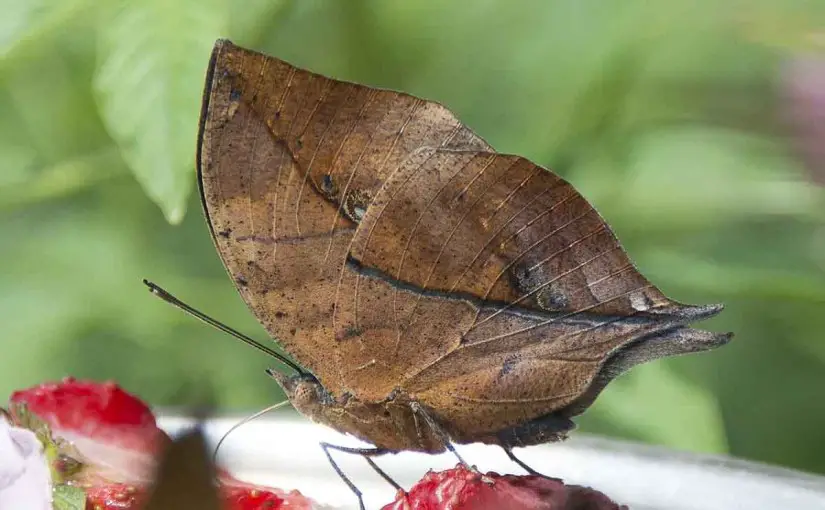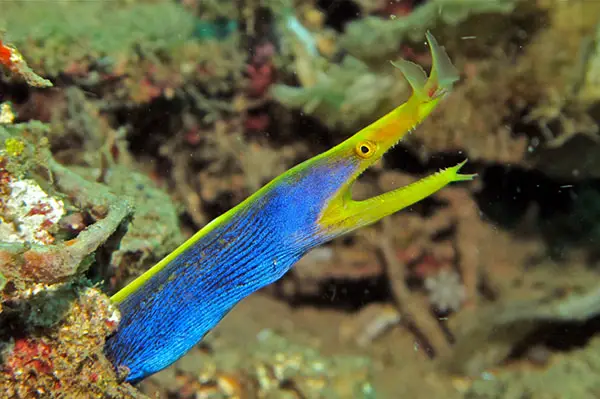| Kingdom: | Animalia |
| Phylum: | Chordata |
| Class: | Reptilia |
| Order: | Squamata |
| Family: | Elapidae |
| Subfamily: | Hydrophiinae |
| Genus: | Hydrophis |
| Species: | Hydrophis peronei |
| (A.M.C. Duméril, 1853) |
Today I am taking you to the Sea’s bed since most people have a lack knowledge about Sea snakes. It is not easy to spot them in their natural environment. However, you may have seen Sea snakes under captive conditions like an aquarium. I will discuss a specific sea snake species named Horned Sea snake or Spiny Head Sea snake. It is also called Peron’s sea snake. As you thinking now, Yes! It has horn shape formation on its head.

Classification
Mainly, there are two types of independently evolved marine snake groups. Those are True Sea snake and Sea kraits. However, our Horned Sea snake belongs to the true Sea snake group. Their scientific name is Hydrophis peronei. They are biologically related to the Australian terrestrial elapids snakes, which include terrestrial cobras and Kraits. These marine snakes belong to the genus Hydrophiidae, a subspecies of the family Elapidae. Other group members (Sea Kraits) are related to the Asian Cobra snakes.
So what makes unique this marine snake? They have a pair of horn-like formations immediately above the eyes as the name denotes. That pair of the horn is a modification of Supraocular scales, which is pointed toward the end. This feature is a bit similar to the Horned desert Viper. They also have little spikes on each scale. This aspect is only found among this snake species.
Habitat of Horned Sea Snake
Their territory is confined to the southern Pacific Ocean’s tropical region, which is situated between the tropic of Cancer and Tropic of Capricorn. We can further define the part using the countries where the ocean area between Japan and Australia. It often inhabits the sandy seafloor or coral reefs up to 30 meters in this area.
Spotting the members of True Sea snakes in the coastal region is a bit rare. Because they have no scales on their abdomen, they can’t move on the floor by abdomen as terrestrial snakes. However, primary marine snakes have scales on the abdomen. Somehow, due to Ocean currents and waves’ activities, it may drive towards the coastal region or trapping in a fishing net.

Body shape
They have a medium-range body by comparing other Sea snakes. The Head and neck are relatively small than the body. It is about 1/3 out of the most significant part of the body.
The body’s rear part is flattened laterally towards the tail. There is a paddle shape structure at the tip of the tail, which helps swim and dive in the water. Adult’s average body size is about 1-1.2 meters in length. The upper part of the body is a gray or pale brown color with black rings on it. At the juvenile stage, these dark bands are prominent. With age, the bands fade out or entirely disappear. The abdomen part is white and alternates with stains and dark stripes. The upper part of the skin covering scales is not overlapping each other. It covers the skin one by one separating each other.
Eyes are relatively large, and there is an annular border around the eye, and rounded black iris appeared. The nostril valves can close anytime, and they use it to trap the breath while underwater.
The most amazing thing is that once breathed from atmospheric air, a Sea Snake can continuously dive for up to 8 hours without coming out of water for a breath. Because they have large elongated lungs similar to the body’s length, which can hold a high capacity of air for the breath, they also can perform cutaneous respiration, which can absorb 30% of oxygen from water and eliminate 90% of carbon dioxide. Therefore Spiny-headed Sea Snake has a highly evolved respiratory system among reptiles who live in aquatic ecosystems.
Research has revealed that Sea snakes have large vascularized vessels starting from the snout, extending towards the brain. These vessels’ function is to supply oxygen to the brain cells directly without going through the lungs.
As terrestrial snakes, they use their tongue for a sniff, which helps them find food and escape from obstacles. It also helps to releases excess salts from the body.

Diet
As Cobras and Kraits, Sea snake uses their deadliest venom to cripple the prey. Usually, Sea snake’s venom is lethal for most animals than terrestrial snakes. Sea snakes are nocturnal hunters. They prefer to hunt at dusk and night.
Almost all Sea Snake species feed on fishes in different sizes and types, including eels and gobies. However, some primitive species feed only on fish eggs.
Horned Sea Snake and Human
Being one of the highly venomous snakes and keeping the deadly venom in the glands, it is rare to observe attacking humans in their natural habitat. Because in the daytime, they exhibit lazy behavior. Since they have quite a small fang, if a Sea snake bites a human, it would inject a small amount of venom into the human body. That is not enough to kill a human. They usually don’t harm the divers. Sometimes you may have seen in the footage of this animal, that they are swimming with divers.
They are very calm in the Sea when not in hunting mode. When tired, these animals fall into sleep on the sea bottom or a Coral reef. Since there is a lack of natural enemies for this animal, they exist in open ocean bottoms. Sometimes they exhibit colorful warnings for the others. Sea snakes are considered curious animals.

Reproduction
They reproduce without coming to the land and give birth to 8-10 pups per female. Reproductive cycle spanning from March to June in a year. Horned Sea Snakes are viviparous species. However, their breeding pattern has not been studied well.






